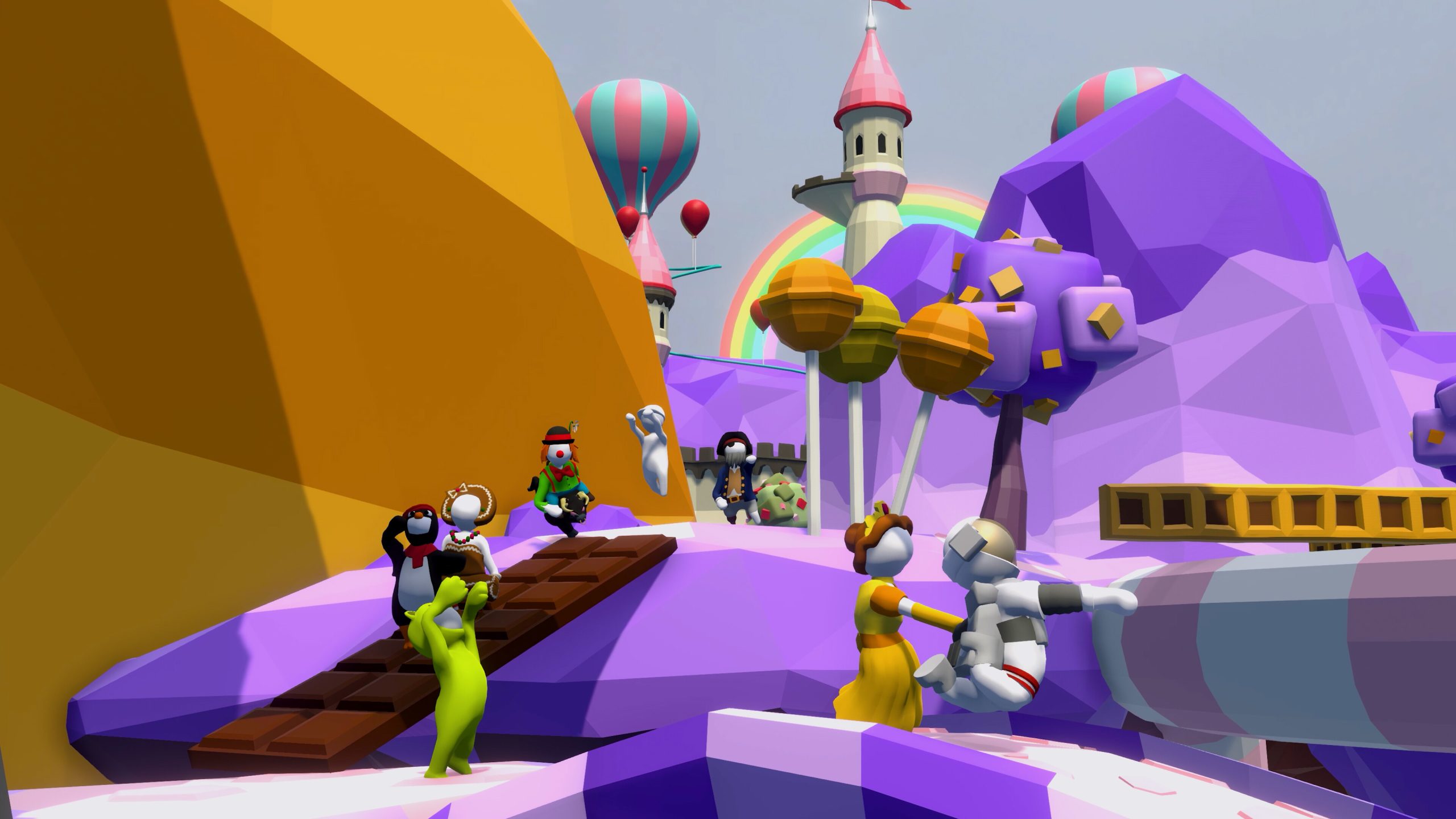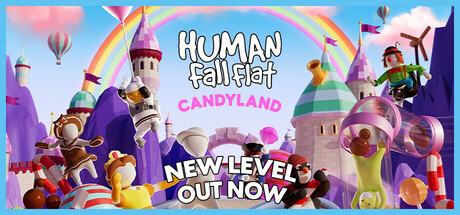Introduction
Human: Fall Flat, released on July 22, 2016, has found its spot among physics-based platformers. For example, it boasts over 50 million players, 5,000 community-made levels, and a lively modding workshop. Plus, it combines silly ragdoll physics with solid puzzle design. In this comparison article, we’ll look at Human: Fall Flat alongside similar games like Gang Beasts, Totally Reliable Delivery Service, and Portal 2. To point out its strengths, its weaknesses, and what its 94% all-time “Very Positive” user reviews tell us.
Gameplay Mechanics
At its core, Human: Fall Flat is a physics-driven puzzle platformer. You control a customizable “Human,” grabbing, climbing and balancing through floating dreamscapes. The newly released Candyland level introduces sugar-slick slopes, waffle rafts and zipline candy canes—perfect for those seeking fresh speedrun routes.
- Speedrun Potential: Levels often have multiple routes. For example, in “Aztec,” a well-timed boulder launch can shave off 20 seconds. In “Candyland,” slide-jump glitches on marshmallow blobs offer new world-record possibilities.
- Co-op Dynamics: Up to eight players: ideal for coordinated “carry-the-boulder” strategies or comedic sabotage. Compare that to Gang Beasts’ brawling focus or Totally Reliable Delivery Service’s physics puzzles. This game balances cooperation with puzzle-solving.
- Puzzle Depth: Unlike Portal 2’s tightly gated progression, Human: Fall Flat encourages creativity—need to catapult yourself across a chasm? Build your own makeshift contraption. This open-ended design fuels workshop creations.

Comparisons to Similar Titles
How does Human: Fall Flat stack up against its peers?
-
Gang Beasts: This game is mostly a party brawler. While Gang Beasts delivers on chaotic melees, it doesn’t have much puzzle content. On the other hand, Human: Fall Flat’s puzzles and its range of levels—from mansions to moonlit nightscapes—give you more to explore, whether you play alone or with friends.
-
Totally Reliable Delivery Service: Like Human: Fall Flat, it uses ragdoll physics and quirky gimmicks. However, its delivery missions can get repetitive after a while. By contrast, Human: Fall Flat’s varied objectives and thousands of community-made levels (over 5,000 in total) help keep things interesting.
-
Portal 2: Known as the gold standard for puzzle-platformers, Portal 2 comes with a tight story and slick voice acting. Human: Fall Flat doesn’t focus on a narrative; instead, it offers a sandbox experience. So, if you’re the kind of player who enjoys coming up with your own solutions rather than following a set path, you might prefer Human: Fall Flat.
-
Fall Guys: This one centers on battle-royale–style mini-games. While both games play with wacky physics, Fall Guys is about surviving each round, whereas Human: Fall Flat rewards clever thinking and skill—making it a hit for speedrunners looking to find the fastest routes.

User Review Analysis
Looking at user reviews, Human: Fall Flat holds up well. For recent reviews, 91% are “Very Positive” out of 809 reviews, and overall, 94% of the 163,945 reviews are “Very Positive.” So, what do people say?
Many players praise the game for “endless replayability,” “hilarious ragdoll moments,” and call the “community workshop” a real treasure. In fact, a lot of fans point out the steady stream of free levels like Candyland and enjoy seeing what the player community creates.
On the flip side, some players mention occasional physics glitches that stop you in your tracks, and they wish there was more of a story or an easier way for new players to get started. A few speedrunners also note that collision detection can be inconsistent when you aim for runs under 30 seconds.
Visuals and Audio
Human: Fall Flat isn’t about high-fidelity graphics but cohesive charm. Its pastel environments—from icy peaks to chocolate rivers—are instantly readable, aiding quick route planning. The whimsical soundtrack and minimal sound effects keep focus on player creativity rather than atmospheric immersion. Compared to Portal 2’s lush production, it’s pared-down by design—but it works in service of clarity and humor.
Industry Impact and Community
With over 3 billion streamed views, Human: Fall Flat has inspired a wave of physics puzzle co-op games. Its Steam Workshop integration set a precedent for user-generated levels in 3D platformers. The continuous free updates (Candyland being the latest) demonstrate an ongoing commitment to community satisfaction.

Conclusion
Human: Fall Flat stands out for its blend of physics-based puzzles, co-op comedy and user-driven content. While it lacks the narrative polish of Portal 2 or the combat focus of Gang Beasts, it excels in replayability and creative problem-solving. The near-universal acclaim—94% Very Positive—speaks to its enduring appeal. For aspiring speedrunners and puzzle enthusiasts alike, mastering its ragdoll mechanics and exploring community levels offers endless fun and challenge.

